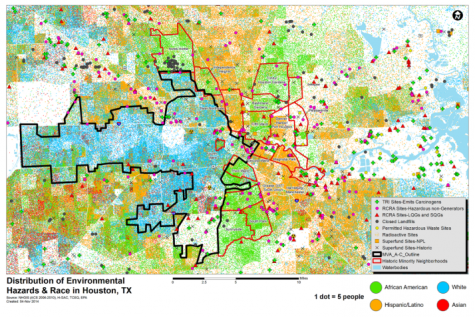A betrayed community
July 16, 2021
One of the most profound examples of environmental racism in Houston is the deliberate placement of toxic waste dumps in and near predominantly Black and Brown neighborhoods.
Back in 1979, a study of the distribution of industrial waste sites throughout Houston found that 14 of the city’s 17 hazardous facilities — accounting for over 80 percent of the city’s waste—were built in historically Black and brown neighborhoods.
Little has changed over the past 40 years. According to a study published by the National Academy of Sciences, Black people are exposed to 21% more pollution even though they produce 23% less pollution than the average household.
I don’t know how to describe the feeling of betrayal.
— Dean Davis
Sophomore Dean Davis lives in Kashmere Gardens, a historically Black community in Northeast Houston. As a child, Davis’s personal oasis was an abandoned railroad yard near his home. While all his friends were at the beach, Davis would go down to the railroad yard and relax with a book.
“It wasn’t too dangerous,” Davis said. “It was kind of a cool spot to hang out.”
One day in Dec. 2019, as he prepared to head out to the railroad site, his father told him he was no longer allowed to go there. His father had recently learned that Union Pacific, the company that owned the site, was poisoning his community with the preservative creosote, a carcinogenic chemical. Rare cancer clusters permeated across his community.

Reports from the Texas Department of State Health Services found that elevated levels of leukemia, as well as lung, esophagus, liver and kidney cancers, occurred in the surrounding communities.
The reports also revealed that Union Pacific had been dumping toxic pollutants into Kashmere Gardens for decades, yet Davis and his neighbors only found out at that December press conference that the railroad was causing cancer in their community.
“It was just all so crushing,” Davis said. “I don’t know how to describe the feeling of betrayal.”
Throughout his childhood, every breath Davis took had been tainted with toxic vapors, but what is particularly concerning for Davis is the knowledge that many of his classmates may one day be employed in the industry that has knowingly damaged his neighborhood for so long.
“I feel awful knowing that some of my friends are going to end up working at these companies that are harming my community,” Davis said. “We’re invisible.”
